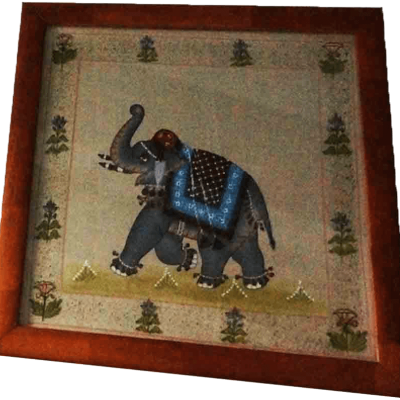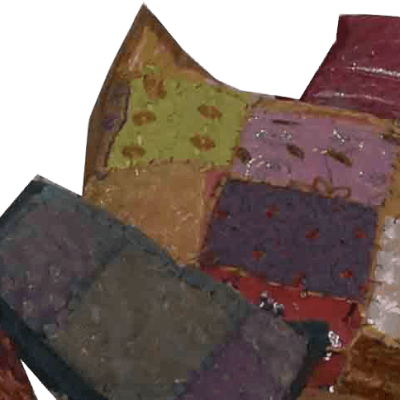And, if you stop playing, you can sell or trade your in-game items on open markets and recoup their value. Contrary to the spirit of DeFi, [proof-of-stake] tends toward centralization in that, theoretically, one entity—or person—flush with cryptocurrency, could single-handedly shape the blockchain. Jack Dorsey, co-founder and former CEO of Twitter, dismissed Web3 as a «venture capitalists’ plaything». Dorsey opined that Web3 will not democratize the internet, but it will shift power from players like Facebook to venture capital funds like Andreessen Horowitz.
This is where individuals in a peer to peer fashion can have economic services between themselves. Just taking encrypted communication as an example, that so far seems very compatible with corporate monopoly. It will be as private as if we were in a field and chatting to each other and could see there was nobody around. He has seven years of tech reporting and reviewing under http://blokino.ru/author/asvfedf/page/5/ his belt for a number of publications, including GameCrate and Cloudwards. He’s written more articles and reviews about cybersecurity and cloud-based software than he can keep track of—and knows his way around Linux and hardware, too. Web 1.0 was the first publicly available web—we’ll leave forerunners like ARPANET out of consideration—and was very basic in many ways.
Facebook recently rebranded itself Meta, and said its priority would be to build the «metaverse,» a digital future where everyone is living and interacting and working together in virtual reality. «If we stay in the current paradigm, we will move further and further into a realm where a small handful of companies run by a small number of people run our experiences in cyberspace,» he said. «And in that world, the problems of Big Tech are exacerbated.» Right now, the idea of the entire Internet reinventing may sound like some far-away digital utopia. But Web3 is driving new conversations — and generating lots of new money, particularly from crypto investors.
Is the Future of NFTs… Free?
Instead of companies providing content to users, they also began to provide platforms to share user-generated content and engage in user-to-user interactions. As more people came online, a handful of top companies began to control a disproportionate amount of the traffic and value generated on the web. Web 2.0 also birthed the advertising-driven revenue model. While users could create content, they didn’t own it or benefit from its monetization. Put very simply, Web3 is an extension of cryptocurrency, using blockchain in new ways to new ends. A blockchain can store the number of tokens in a wallet, the terms of a self-executing contract, or the code for a decentralized app .
As we move toward Web 3.0 and the technologies that support it mature and become scalable, I believe the web will reflect its original intent. On balance, he said, collective voting on the rules of engagement will be better than what users experience on major social media platforms today. In a Web3 world, people control their own data and bounce around from social media to email to shopping using a single personalized account, creating a public record on the blockchain of all of that activity. In the Web3 vision of the internet’s future, tech giants like Facebook and Google aren’t as critical. The internet instead is a peer-to-peer experience built on what’s known as the blockchain. The current internet is, for good or ill, regulatedin various ways in various jurisdictions.
“Companies that are succeeding are relying on organic traffic” from building a good game, he said, especially within the casual gaming community. Gamers will likely gravitate towards the companies that they already know and the communities they are a part of, he said. “The ability to earn money from playing video games was a motivating factor behind a lot of gamers in Asia playing these titles,” Daniel Ahmad, research director at Niko Partners, a games market data company, said over email. It’s especially noticeable in emerging markets with lower average disposable incomes, like in the Philippines or China.
Will it be the end of tech giants?
A decentralized app is a program built using blockchain technology. Unlike regular websites, dApps are not hosted by a central server. Since these apps run on top of the blockchain, they are inherently decentralized. Ethereum, the blockchain on which most of this is based, is notoriously inefficient. It is a new, decentralized iteration of the web that runs on blockchain technology.
A web3 Spotify could allow fans to buy “stakes” in up-and-coming artists, effectively becoming their patrons in exchange for a percentage of their streaming royalties. Just in case you’ve missed all the hype – the idea of the metaverse is that it will be a much more immersive, social and persistent version of the internet which we all know and love. In many ways, the metaverse can be thought of as the interface through which humans will engage with web3 tools and applications. Marlinspike also remarked that the new web resembles the old web. Some Web 2.0 companies, including Reddit and Discord, have explored incorporating Web3 technologies into their platforms.
Expand business menu
Web2 is simple, really, and because of its simplicity more and more people around the world are becoming creators. If you want to craft a thought and share it with the world, you can. If you want to upload a video and allow millions of people to see it, interact with it, and comment on it, you can do that too. In the web2 world, you don’t have to be a developer to participate in the creation process. Many apps are built in a way that easily allows anyone to be a creator.
Unlike the first two generations of the web, where governance and applications were largely centralized, Web 3.0 will deliver applications and services through a distributed approach that doesn’t depend on a central authority. Besides programming the first browser, Berners-Lee wrote the Hypertext Markup Language , which tells browsers how to display content, as well as the Hypertext Transfer Protocol specifying how web servers transfer files to browsers. He also started designing software for a «Semantic Web» that would link data across web pages, but hardware constraints prevented its implementation.
Young M.A. Sparks Fan Concern After Video Surfaces Online
Decentralized apps without adequate restrictions in place will be free from censorship, which can make the space more difficult to monitor than previous iterations. Users can own and govern sections of the internet, rather than relying on services offered by the likes of Google, Apple, or Facebook. This also helps to make Web3 safer and more efficient than Web 2. Since governance tokens can be sold and bought, there’s nothing stopping one entity from buying up the available tokens of a given platform, giving them a majority of the decision-making power of a given platform.
But what exactly is Web3, and how is it different from Web2? Before understanding Web3, it’s essential to comprehend earlier web versions. Web1 was the web’s original version, primarily focused on static content and simple interactions. I think the services and the expectations that we have are under threat because of the centralization of power that the technology allows. There’s not much that has come along before Facebook and Google that allowed that level of power for such few people. It’s not that I don’t think Facebook and Google and all the rest of it deserve to be displaced, but that’s not exactly the crux of Web3.
For me, Web3 is actually much more of a larger sociopolitical movement that is moving away from arbitrary authorities into a much more rationally based liberal model. And this is the only way I can see of safeguarding the liberal world, the life that we have come to enjoy over the last 70 years. It’s the only way that we can actually keep it going 70 more years into the future.
This decentralization would be a boon for many people, as you could more easily access the internet from anywhere, perhaps opening up the web to the one-third of the world population that hasnever used the internet. At the same time, the promise is that artificial intelligence would limit abuse of the system by bots and click farms. What sets Web 3.0 apart from its ancestors is that it’s decentralized, more or less like Web 1.0 was, but is interactive like Web 2.0 is.
- You’d be hard pressed to find many direct resemblances between the internet most of us use today and the one we used in the early 2000s.
- Tokens also brings about the idea of tokenization and the realization of a token economy.
- «I don’t think that web3 has to replace everything in web 2.0. More often than not, it’s going to run parallel to web 2.0,» Neuroth says.
- Web3 advocates emphasize user privacy and ownership of data.
- Web3 is a term that has gained increasing popularity in recent years, especially in the world of blockchain and cryptocurrency.
According to Chainalysis, $14 billion went to illicit addresses in 2021, an all-time high and 79% more than last year’s $7.8 billion. During the first few years of the world wide web, now called web 1.0, most websites were read-only web pages. This means that pages had no interactivity, they were just meant to be read. The problem with the first version of the web was that creating your own web page and contributing to this version of the web, took a considerable amount of technological know-how. In addition to data privacy, Wood also emphasized online pseudonymity, which means users will connect to the web under pseudonyms instead of their real identities.
Kevin Roose, a Times technology columnist, is answering some of the most frequently asked questions he gets about NFTs, DAOs, DeFi and other crypto concepts. Bitcoin – The original cryptocurrency has been around for more than ten years, and the protocol itself is decentralized, although not all of its ecosystem is. Web3 introduces new paradigms that require learning different mental models than the ones used in Web2.0. A similar education drive happened as Web1.0 was gaining popularity in the late 1990s; proponents of the world wide web used a slew of educational techniques to educate the public from simple metaphors to television broadcasts.
In turn, metaverses will surely give rise to even more new technologies. First, Web3 is much more secure, private, accessible, and resistant to censorship than Web 2.0. Second, Web3 also represents a new philosophy for how the internet should work, and who should be in control of it—offering individuals a chance to shape the future of the Web. Advocates of Web3 say that, in this regard, it democratizes (or de-monopolizes) the Web.
There’s no way to erase anything, whether it’s a regrettable post or revenge porn. Immutability also could spell major problems for Web3 in some places, such as Europe, where the General Data Protection Regulation enshrines the right to have personal data erased. It’s still unclear whether the product lives up to the pitch. Predictions as to what Web3 might look like at scale are just guesses, but some projects have grown pretty big. The Bored Ape Yacht Club , NBA Top Shot, and the cryptogaming giant Dapper Labs have built successful NFT communities. Clearinghouses such as Coinbase and OpenSea have created Web3 on-ramps for people with little to no technical know-how.
Planet Money Summer School 6: Crypto & Commencement
Contrast this with Web 2.0 where you communicate back and forth with servers that have centralized ownership behind closed doors. In Web 2.0, you have to trust the owners of the service you’re using to respect your privacy. And, realistically, Web 2.0 Big Tech companies have shown time and again that they’d rather sell your data than protect it. There’s no central “Ethereum corporation,” for example, that has privileged access to all of the data sent through its network, or that’s following you around the Web with trackers. The Web3 model of ownership is, however, much more complex and trickier to achieve from a technical perspective.
The possibilities are endless, and there’s a focus on what it can do — or will do, according to optimists. I’m old enough to remember when the unfettered discourse enabled by Twitter and Facebook was supposed to sow democracy the world over. As Web3’s aura of inevitability wins converts, it’s important to consider what could go wrong and recognize what’s already going wrong. One lesson from these efforts is that on-ramps matter, but less so the more committed the community is. Getting a crypto wallet isn’t hard, but it is an added step. So Top Shot doesn’t require a one — users can just plug in their credit card — which helped it acquire interested users new to NFTs.
You get a real vote on decisions made by the networks you spend time on. More than that, you get a stake that’s worth something — you’re not a product, you’re an owner. The totality of these efforts is called “Web3.” The moniker is a convenient shorthand for the project of rewiring how the web works, using blockchain to change how information is stored, shared, and owned. In theory, a blockchain-based web could shatter the monopolies on who controls information, who makes money, and even how networks and corporations work. Advocates argue that Web3 will create new economies, new classes of products, and new services online; that it will return democracy to the web; and that is going to define the next era of the internet. When you connect to DApps on Web3, you’re communicating back and forth with nodes that are independently owned.
Popular NFT marketplaces include NBA Top Shot, OpenSea, Mintable, Nifty Gateway, and Rarible. A smart contract is an agreement between two parties where one side agrees to perform some action if certain conditions are met. Smart contracts allow both sides to agree upon terms without needing to go through a trusted third party. So, you understand the concept, but what will Web3 look like in the “real world”? What will designers need to think about and how will engaging with the internet change with this new iteration?
Whereas scale has been a key measure of a Web2 company, engagement is a better indicator of what might succeed in Web3. In Web 1.0 and 2.0, governments, Big Tech, and Wall Street are the central authorities that verify your identity, transactions, rights to publish content, even basic access to the Web. But whether someone runs their own servers, or rents them from a storage provider, they have control over them. This model is called “centralized” because the owner is the ultimate authority over the servers, and thus the service.





